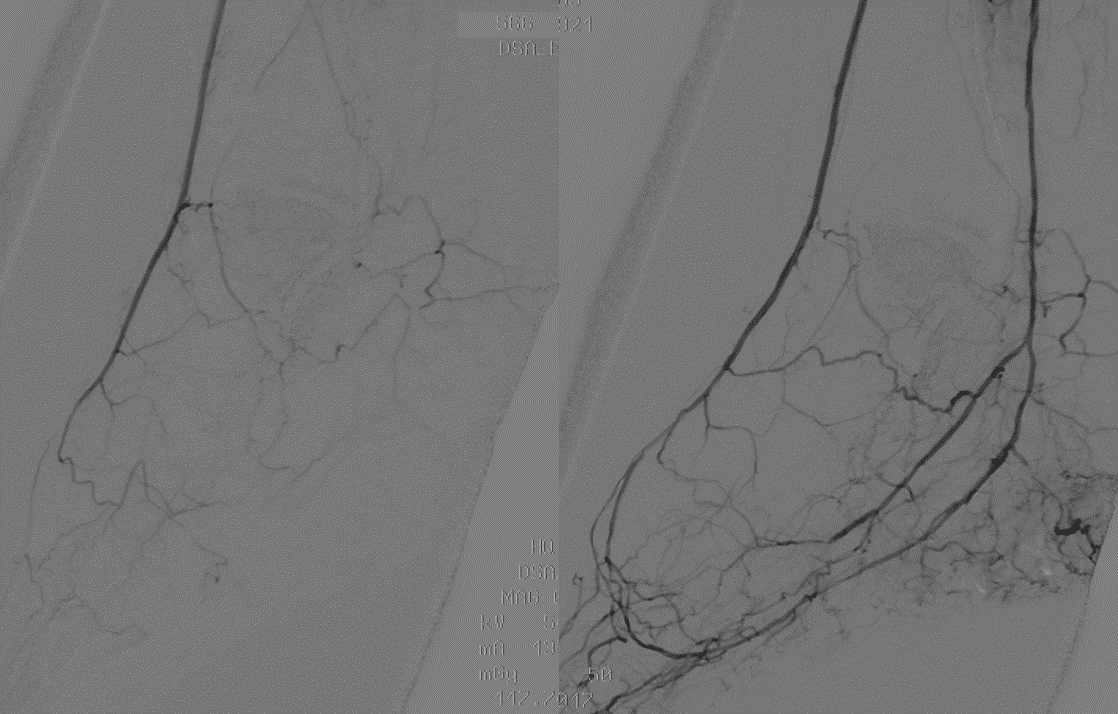If you or a loved one has symptoms of chronic limb-threatening ischemia (CLTI), outpatient vascular treatment may be the best option. At VIE, we specialize in caring for patients with this serious condition. Using advanced testing and imaging for diagnosis and minimally invasive procedures to heal wounds, we are dedicated to preserving limbs and quality of life.
What is chronic limb threatening ischemia?
CLTI, also known as chronic limb ischemia (CLI), is an advanced form of peripheral arterial disease (PAD), a severe blockage of the arteries caused by plaque buildup. CLTI leads to reduced blood flow to the body’s extremities and can cause pain, ulcers, and, if left untreated, possibly amputation. Fortunately, there are procedures that can help.
What are some of the risk factors of CLTI?
What are some of the symptoms?
Endovascular treatments are minimally invasive surgical procedures.
The treatment plan for chronic limb threatening ischemia often varies, but the overarching goal is to improve blood flow to salvage the limb and reduce pain. Possible treatments for CLTI range from medication to endovascular treatments to arterial surgery, including bypass treatment or amputation.
Candidates for endovascular procedures can be treated in our outpatient center by our interventional radiologists, eliminating the need for a hospital visit or overnight stay.
How is endovascular treatment for CLTI performed?
A local anesthetic is administered, and access to the artery is achieved by making a small skin incision. After performing an angiogram (taking pictures of the arteries), wires and tubes (catheters) are used to get to the area of blockage.
Treatment of the narrowed or blocked artery can include one or more of the following:
We will determine the best treatment course for you based on various factors.
What are the benefits of endovascular treatment for CLTI?
Chronic limb threatening ischemia is a condition that requires medical attention and treatment to restore blood flow. Endovascular treatment for CLTI dramatically improves patient quality of life by significantly reducing pain, healing open wounds, and reducing the risk of amputation.
Am I a candidate for endovascular treatment?
Our physicians will partner with you and/or your existing care team to determine if you are a candidate for endovascular treatment. If you have any of the above-listed symptoms and risk factors, schedule an evaluation immediately.
AVERAGE RECOVERY TIME
The incision for endovascular treatment is tiny, so stitches are usually unnecessary. Most patients can resume normal activities within a few days, with full recovery expected within two weeks. Our team will provide personalized post-procedure care instructions and follow-up to ensure the best possible outcomes.

Figure 1. Endovascular reconstruction of the pedal loop and plantar arteries.


Phone: 952.838.0650
Fax: 952.838.0651
Hours: 7 AM – 4 PM (M – F)
© 2025 Vascular & Interventional Experts